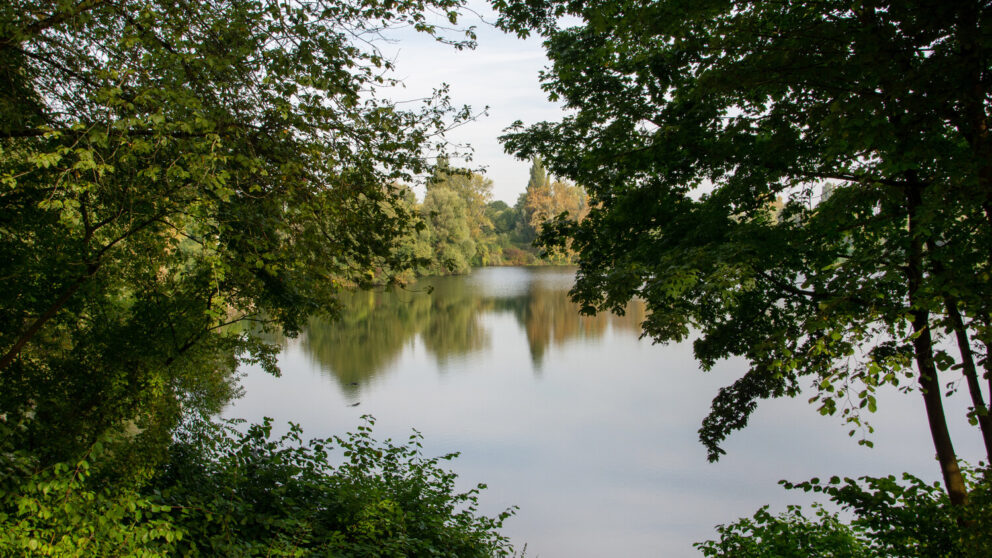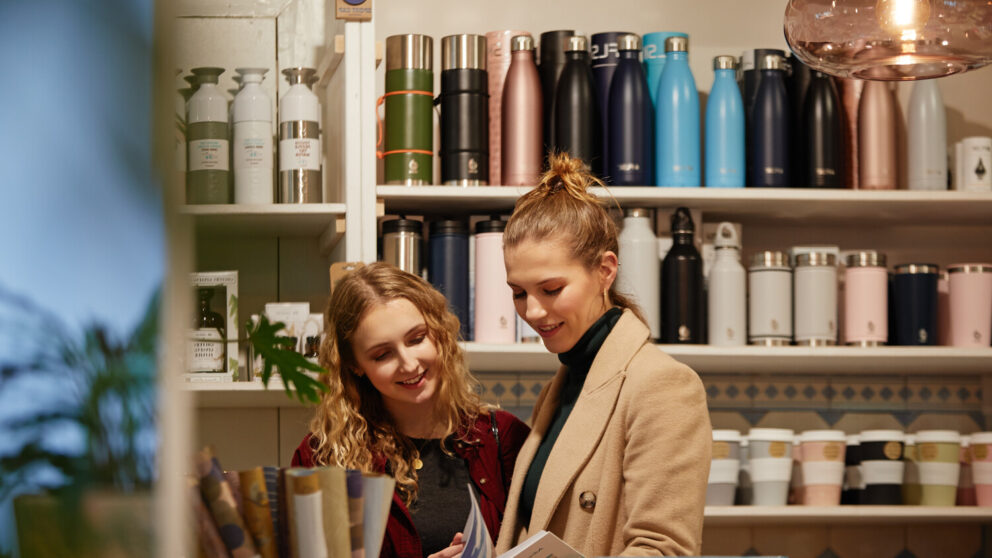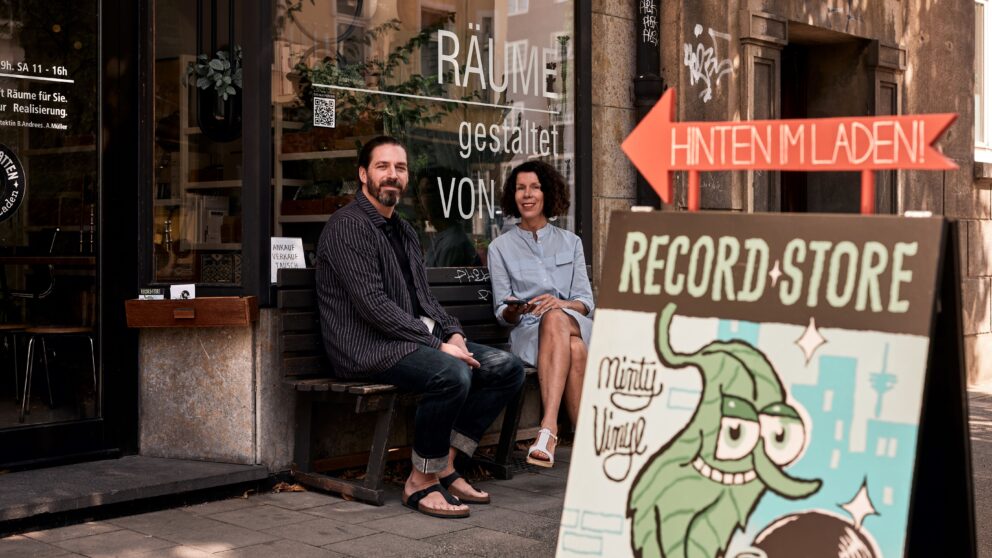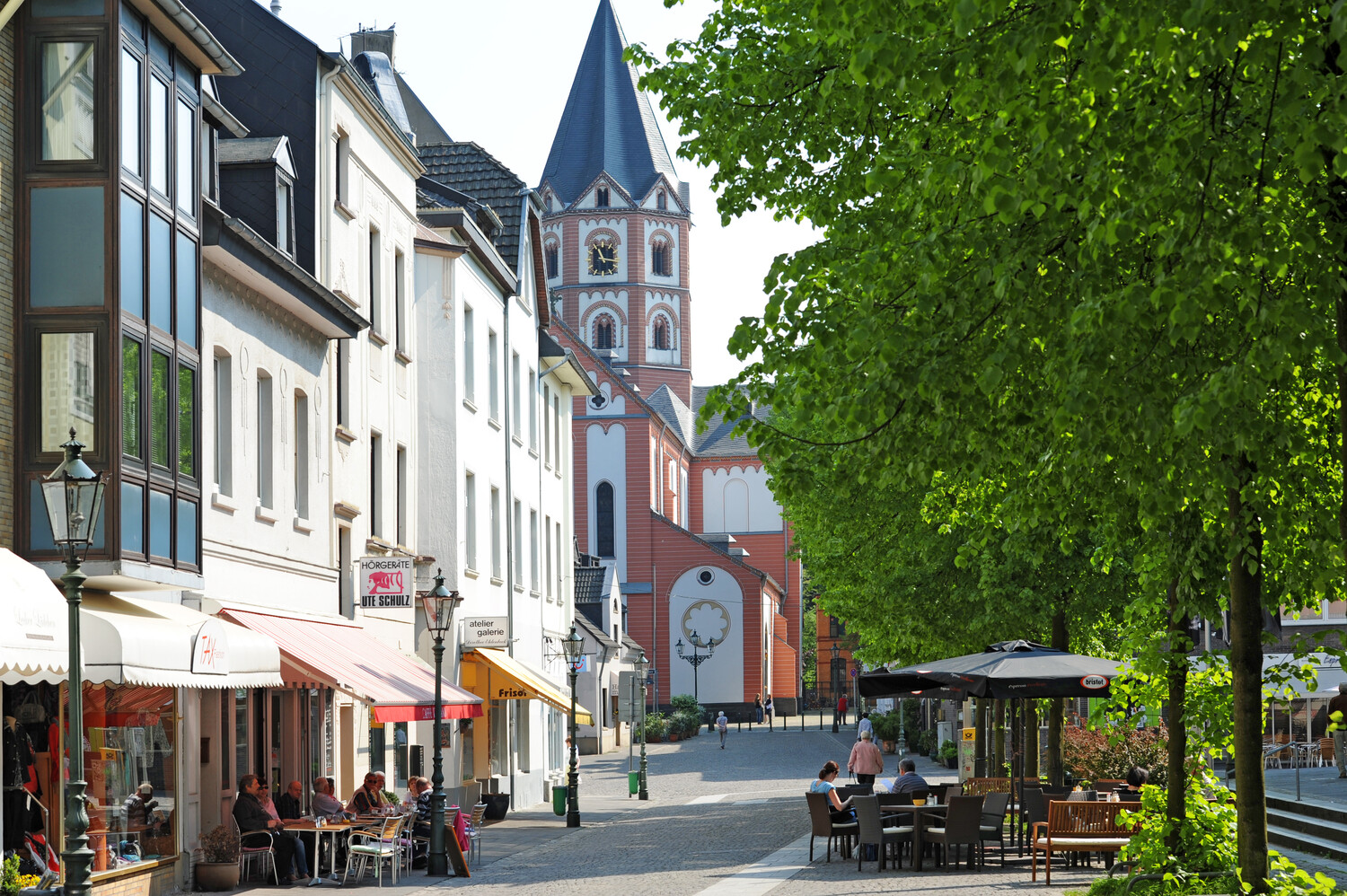
An afternoon of historical delights in Gerresheim
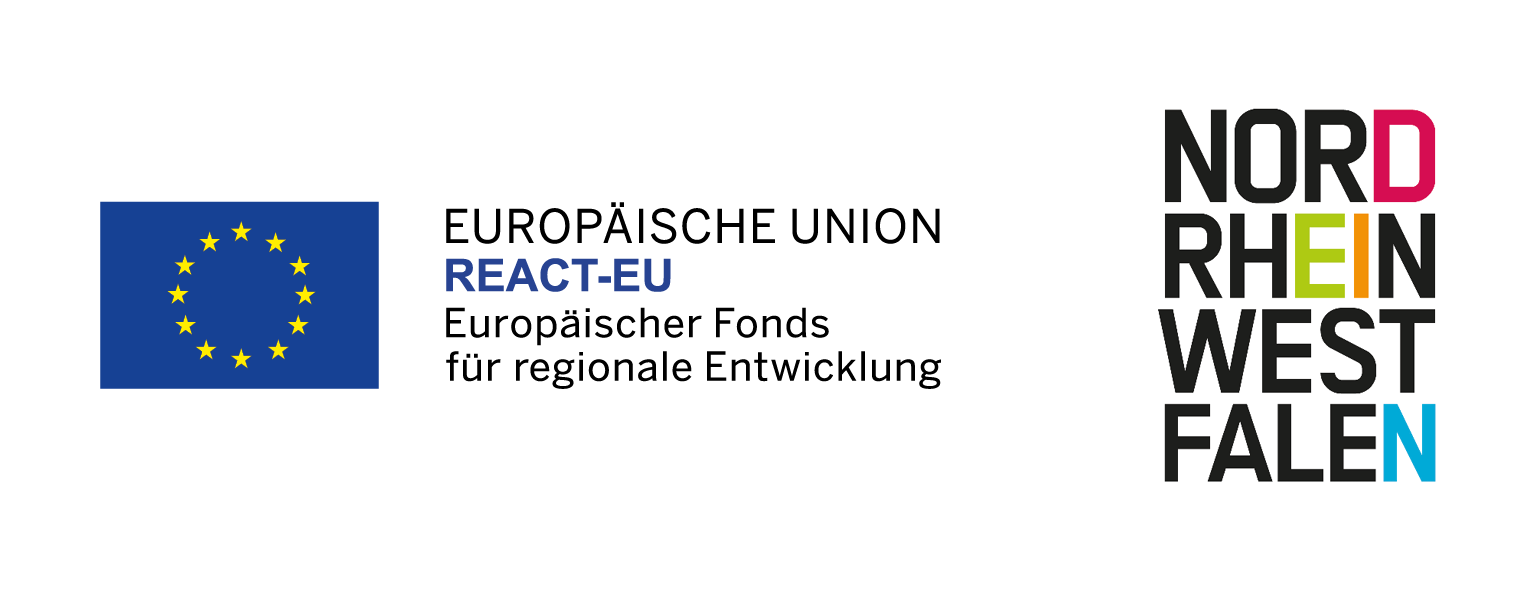
An afternoon of historical delights in Gerresheim
A must for history buffs and fans of Italy!
Compared with Düsseldorf’s other districts, Gerresheim is a relative newcomer as it only formally became part of the city in 1909. That was the year that Gerricus, a member of the Frankish nobility and the namesake of this historical district, established a secular convent for noblewomen, which attracted women, men and children to the area. But there are signs that people settled here as far back as the Neolithic Age. From a historical perspective, Gerresheim is thus one of Düsseldorf’s most exciting districts and has lots more to offer beyond what is included in this short article.
As you enter Gerresheim, situated in Düsseldorf’s borough no. 7, it doesn’t take long before you reach a site of historical importance. The witch’s stone, which has been located in the green space at the junction of Dreherstrasse and Schönaustrasse since 1989, is a memorial to two women who were burned at the stake after the Lower Rhine region’s final witch trial. The sculpture was produced by Gerresheim artist Gabriele Tefke to commemorate Helena Curtens, who was just 14 at the time, and Agnes Olmans, who died aged 46.
Just a few hundred metres away, and the best place to start your exploration of Gerresheim, is the square between Dreherstrasse and Am Wallgraben. There is a handy information panel here showing how to find the district’s main points of interest. There are also two bakeries, a florist, a kiosk, a few other shops and – for the end of your tour – a restaurant. From here, you can spot the spire of St Margaret’s, a Catholic basilica. If you then cross the street called Neusser Tor, you’ll pass Gerresheim’s citizens’ office. It is housed in the former Katharinenberg Abbey, which was a home and place of work for Franciscan nuns until 1834. The old mayor’s house is even older, dating back to 1646. To put that into context: there were just 500 to 600 million people living in the world at that time. Hard to imagine these days, isn’t it!
Gerricusplatz is a gem of a square in the heart of Gerresheim and is largely free of traffic. It’s a place to discover a side of Düsseldorf that has little in common with the rest of the city, but in a positive sense. The brick and half-timbered buildings – many crooked or leaning – provide an idyllic backdrop for the Christmas market and other events and invite you to step into days gone by. Everything here seems calmer and more peaceful, with a focus on what is really important. It’s as if the everyday hustle and bustle has hung up its jacket at the entrance to Gerresheim, so that an air of relaxation pervades the district. This has surely been influenced by the aforementioned St Margaret’s basilica, which was completed in 1236 and features a Romanesque church building. A highlight inside the basilica is the Ottonian crucifix at the high altar, which dates back over 1,000 years and is one the oldest intact high crosses in Europe.
Leaving the basilica behind, there are plenty of benches under the lime trees, a pleasant spot for a chat with the locals in spring, summer and autumn. Perhaps the conversation will turn to the Heimatbrunnen, a fountain built in 1973 as a present from the city to mark 1,100 years of Gerresheim. The 15 scenes tell the story of the district – great for anyone with an interest in history. Just a few metres away on the same square is the Quadenhof, a now privately owned moated castle that was built in the 15th century and served to protect and defend Gerresheim in the Middle Ages. The members of the Düsseldorf School of Painting would also set up their easels here to record the castle on paper or canvas.
Other popular subjects that they painted were the beautiful Alter Markt square just round the corner – where teams gather to compete at boules – and the many art nouveau houses. There are plenty you’d love to call your own, with more than enough space to be turned into your dream home when you finally win the lottery! You will spot these idyllic, privately owned properties along Dreifaltigkeitsstrasse, Ottostrasse and Hardenbergstrasse. One that particularly stands out is Villa Poggfred at Heyestrasse 92. Another architectural highlight is a house that resembles a medieval castle and once belonged to the company doctor of the Gerresheim glassworks – more on that later. And it’s just a short walk from here to the Gustav Adolf Protestant Church, which was completed in 1878.
So that’s enough walking for now. It’s time for the essential part of any day out: food! As luck would have it, many Italians have made their home in Gerresheim, and the wealth of Italian restaurants cater to every taste, from simple fare to sophisticated delicacies and multi-award-winning cuisine. Starting with Saltimbocca, which isn’t far from Gerricusplatz (Kölner Tor 40) and Barberia Italiana (Heyestrasse 1), many of the eateries are located at the lower end of Heyestrasse, around two kilometres from Gerricusplatz. In fact, so many descendants of former migrant workers run the bars, ice-cream parlours, pizzerias and shops here that this area of southern Gerresheim is sometimes nicknamed Little Italy. Why not try Trattoria Bistro Terranova (Heyestrasse 119) or enjoy a quattro stagioni at Pizzeria Malibu (Heyestrasse 114) or at La Ruota (Bündingenstrasse 1). The very traditional Trattoria Bei Mama Lisi (Nachtigallstrasse 3) has become a Gerresheim institution. If you’re planning to take some treats home with you, the delicatessens Sapori del Sud (Benderstrasse 45) and Il Punto Dolce (Heyestrasse 127) sell Parmesan, pappardelle and a whole host of other gourmet products. Those migrant workers came to this area to work in the Gerresheim glassworks, founded by Ferdinand Heye in 1864. The factory made the Gerresheim name famous well beyond the region. It was actually the biggest in the world at the end of the 19th century, with 1,200 people producing glass day and night. The glassworks were consigned to history at the end of 2005, and a new residential quarter is being developed on the site. So will your new-found love of Gerresheim mean you’ll perhaps be back one day to see if any of the new properties take your fancy?
This article is supported by REACT-EU.
Title image: Düsseldorf Tourism

